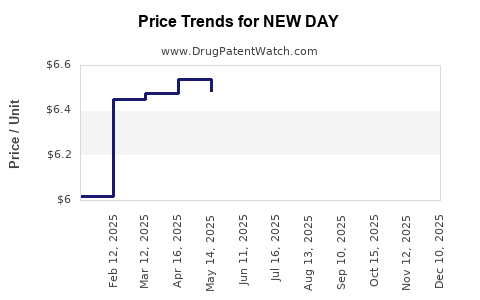Drug Price Trends for NEW DAY
✉ Email this page to a colleague

Average Pharmacy Cost for NEW DAY
| Drug Name | NDC | Price/Unit ($) | Unit | Date |
|---|---|---|---|---|
| NEW DAY 1.5 MG TABLET | 16714-0809-01 | 5.25680 | EACH | 2024-11-20 |
| NEW DAY 1.5 MG TABLET | 16714-0809-01 | 6.46927 | EACH | 2024-10-23 |
| NEW DAY 1.5 MG TABLET | 16714-0809-01 | 6.81242 | EACH | 2024-09-18 |
| >Drug Name | >NDC | >Price/Unit ($) | >Unit | >Date |


